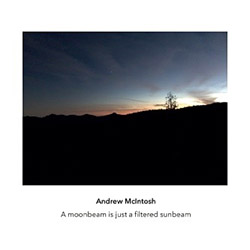
Intended to be played continuously without a break, composer and violinist Andrew McIntosh's long-form composition features field recordings of pine woods in his home state of California in performance with violin, viola, piano, wine glasses, slate and electronics, an ethereal work combining improvisation, open tunings, just intonation and sympathetic resonance.
In Stock
Quantity in Basket: None
Log In to use our Wish List
Shipping Weight: 3.00 units
EU & UK Customers:
Discogs.com can handle your VAT payments
So please order through Discogs
Sample The Album:
Andrew McIntosh-violin, viola, piano, wine glasses, slate, field recordings, electronics
Click an artist name above to see in-stock items for that artist.
Label: Another Timbre
Catalog ID: at183
Squidco Product Code: 31297
Format: CD
Condition: New
Released: 2021
Country: UK
Packaging: Cardboard Gatefold
Recorded by Lewis Pesacov, and Andrew McIntosh.
Another Timbre Interview with Andrew McIntosh
Can you tell us a bit about your background in music?
I began playing violin at age 5, and improvising was a part of my musical practice from almost the very beginning. I had an arrangement with my childhood violin teacher where however much time I spent making things up I had to spend an equal amount of time on scales, etudes, and repertoire for the lessons. Most of my formal musical training has been as a performer (violin, viola, and baroque violin), although I also studied composition with Marc Sabat and Wolfgang von Schweinitz at CalArts, where I now teach, and composing is at least as important a part of my musical life as performing.
For the last 15 years or so I've been writing and performing in a perpetual rotation of priorities. At any given time I'm doing more of one than the other, but it doesn't stay constant. My performing life also rotates, with my other life as a baroque violinist in early music ensembles being at least half of the performing I do. I also perform and record intermittently with Wadada Leo Smith in his Red Koral Quartet, was a founding member of the Formalist Quartet, which has been together for 15 years (although we haven't been particularly active recently), and play in a hodgepodge of other solo and new music contexts.
How did the 'Moonbeam' project come about, and has it been performed in a concert situation?
A moonbeam is just a filtered sunbeam came about as the result of a long-term dream that I finally had the time to follow through on during the pandemic. That dream was to make an album-length piece of music using improvisation, electronics, and samples to create music designed specifically to exist as a recording, and not as a performance. I love listening to recordings, and I'm very aware that most of what I write and play was composed for performance environments and the recorded versions of the pieces are primarily just a document of a performance. I also wanted the piece to heavily feature improvisation, re-tuning the open strings of the violin and viola in a microtonally just tuning so that I could use the sympathetic resonance of the instrument to guide my ear while improvising more or less in just intonation. I also recorded long improvisations in multiphonics on bowed piano and adjusted the playback speed of those recordings by the same ratios that I had used to adjust the tuning of the violin strings, so that the microtonal system on the violin and viola matched the harmonics of the bowed piano.
Thus, Moonbeam ended up being the first piece I have ever composed that has no score. It did get a broadcast premiere earlier this year, though, on a festival called Darkness Sounding that was hosted by the new music ensemble Wild Up. The piece streamed at sunrise and sunset (Los Angeles time) for three days in a row last January. That's probably the closest it will ever get to a concert situation.
Why did you want to use these particular recordings of wind in pine trees, and do you often use field recordings in your music?
I've loved the sound of the wind in pine trees for many years. When I can I spend time hiking or climbing in remote mountains in California, where that is the only sound you can hear. It's a sound that stays with me afterwards, so that when I hear it I feel a sense of coming home to something, as well as a sense of being somewhere wild and solitary. It's only very recently that I started using field recordings in my music, but almost everything I've written since 2019 uses recordings of the wind in different California trees. Sadly, for several of those pieces wildfire burned the trees I recorded after I took the recordings. In the case of Moonbeam the trees thankfully did not burn, as they are quite special. Most of the sound of the wind in the pieces comes from bristlecone pines, which are the oldest living trees on earth. The trees in the recording are around 2000 years old, and nearby were trees that are over 4000 years old. It's a very rare species of pine that only grows at extremely high elevations near the tops of several desert mountain ranges in the American west.
As for how the recordings turn into music, I'm treating them in this piece as a kind of motion that activates a series of electronic filters constructed out of the resonance of the piano harmonics that were used earlier in the piece, as well as bell plates and bowed cymbals. So, in a sense, the wind is functioning like a violin bow that "bows" the resonance of the metal objects and the piano harmonics - except instead of the filtered sound being produced by friction, it's produced in an artificial digital environment that couldn't actually exist in the physical world. I like to think of it as though the piano, bell plates, and cymbals are being played by the wind. The sounds were actually given a brief physical existence in the mixing process by using primarily analogue gear, so there's a further layer of filtering through circuits, tubes, and transistors that the sound has traveled through before going back into the piece.
Real-world physical filtering is present in the piece as well, including in the violin and viola, through the use of mutes of different materials placed on the bridge (wood and heavy metals primarily). Also, all of the piano sounds (both bowed and struck) have been filtered by finding specific harmonic nodes on the string that remove most of the sound spectrum and leave only certain partials remaining. The slate samples were also filtered physically by using my fingertips and different sizes of rocks.
That's fascinating, I didn't realise that even the field recordings were being filtered/tuned in this piece. Do you use just intonation tunings in all your compositions? I'm intrigued because, although I like a lot of JI-inspired music, for me it's just one tool among many other possible ways of organising sound / music, and doesn't hold a privileged place within the very diverse field of contemporary composition. Is it different for you?
I use just intonation in most of my compositions, either in their entirety or sometimes just as one layer of harmonic organisation among several intersecting layers. For me it is the basic lens through which I understand sound and the way vibrations interact, but I also like treating it as one system that can layer and collide with other systems. This might seem sacrilegious to the concept of pure intonation, but it's how I like using it. Sometimes I simply just enjoy sounds that are dirty, even if their conceptual framework is mathematical.
A fair amount of Moonbeam could be described as music that uses JI as its theoretical framework, but in practice the music is at times rather hazy in its tuning. I like bending tones away from where they are precisely in tune, so that when they do lock in they have a sense of arrival, and I like vibrato sometimes, and I like gritty textured sounds, and I like near-unisons, and I like performing with fixed-pitch instruments wherever the notes happen to be, and I like inharmonic sounds, and I like beating patterns. None of these fondnesses are compatible with JI in its purist sense. However, even when working within a just framework as a foundation, the choice still exists whether to tune the sounds precisely or whether to let them interfere with each other in their own unique ways, influenced organically and imperfectly by the humans and objects producing them. In Moonbeam I make both choices at different times (and sometimes at the same time).
Artist Biographies
• Show Bio for Andrew McIntosh "Described in the Los Angeles Times as "an explorer into the cracks of intonation and the quirks of symmetry", LA- based composer Andrew McIntosh is known for writing music with "soundscapes rich and immersive" (San Francisco Classical Voice) and "lavish cascades of colorful sound" (LA Times). His music is regularly performed in the US and Europe and has been featured at major venues in The Netherlands, Germany, Austria, Switzerland, England, Los Angeles, and New York, including several recent performances at the Los Angeles Philharmonic's Green Umbrella series in Walt Disney Concert Hall and at Monday Evening Concerts in Zipper Hall (Los Angeles). He is also one of the six composers of The Industry's internationally-acclaimed mobile opera, Hopscotch. A recent album of his music on Populist Records, Hyenas in the Temples of Pleasure, has been described as "a shining example of the extraordinary music that the youngest generation of American experimentalists has to offer" (TEMPO) and has been recommended by Alex Ross of The New Yorker on his best recent releases list. Also a frequent performer as violinist, violist, and baroque violinist, McIntosh is known for being a specialist in alternate tuning systems and for being a member of the Formalist Quartet, which is dedicated to adventurous and current repertoire and regularly performs around the US and Europe. As a solo artist he has appeared at venues such as Stanford University, REDCAT (in Walt Disney Concert Hall, Los Angeles), the Wulf (Los Angeles), Unruly Music (Milwaukee), Hamburger Klangwerktage (Hamburg), Bludenzer Tage Zeitgemasse Muzik (Austria), Moments Musicaux Aarau (Switzerland), the Pianola Museum (Amsterdam), the Hammer Museum (Los Angeles), and KPFK Pacifica Radio. He also was the viola soloist in the US premiere of Gèrard Grisey's Les Espaces Acoustiques, for which performance the LA Times said he "played with commanding beauty". As a chamber musician he has played in festivals, concerts, art spaces, and recordings around the world with the Formalist Quartet, Tholl/McIntosh duo, Quatuor Bozzini (Montreal), Wet Ink Ensemble (New York), Rohan de Saram, Marc Sabat, Jürg Frey, Dante Boon, and wild Up, and has recorded for New World Records, Innova, Mode Records, Populist Records, Wandelweiser Editions, hat[now] ART, Darla Records, and Care/Of Editions. As a baroque performer McIntosh has concertized with the American Bach Soloists, Bach Collegium San Diego, Musica Angelica, LA Master Chorale, Les Surprises, Tesserae, Musica Pacifica, Preethi de Silva, and the Corona del Mar Baroque Festival. He also directs a small baroque ensemble which focuses on 17th century French and Austrian violin repertoire, in particular the complete Rosary Sonatas of Biber, and has performed at the Getty Museum, the Hammer Museum, the Santa Barbara Museum of Art, and the Museum of Jurassic Technology. A native of rural Northern Nevada, McIntosh is currently based in the Los Angeles area where he enjoys a large and frequently unexpected variety of writing, performing, traveling, teaching, and recording activities." ^ Hide Bio for Andrew McIntosh
11/18/2024
Have a better biography or biography source? Please Contact Us so that we can update this biography.
Track Listing:
1. Beginning 07:07
2. Middle 21:11
3. Other Middle 10:00
4. Ending 19:21
Compositional Forms
Electro-Acoustic
Stringed Instruments
Electronic Forms
Field Recordings
Solo Artist Recordings
New in Compositional Music
Staff Picks & Recommended Items
Search for other titles on the label:
Another Timbre.


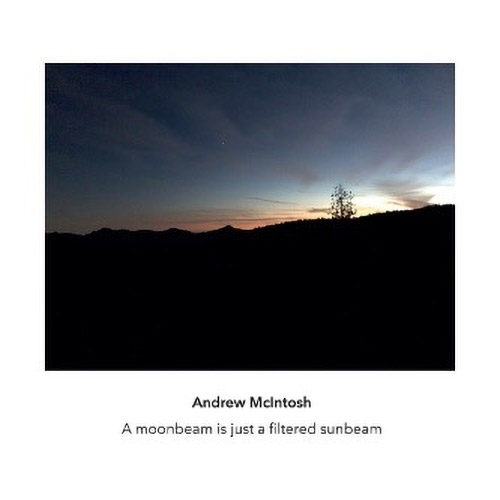

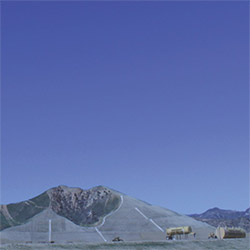
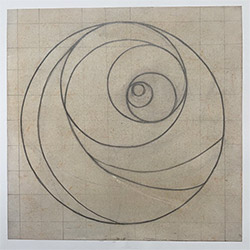

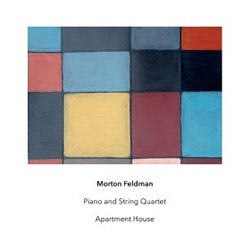
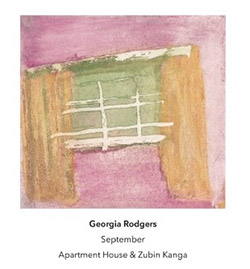
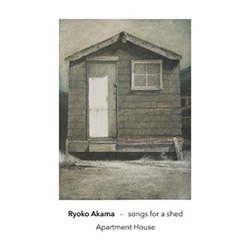



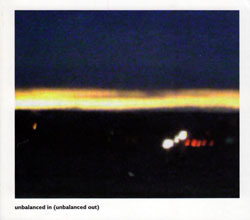
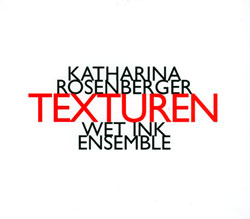
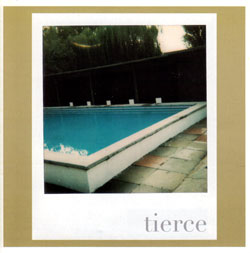




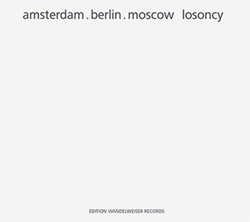

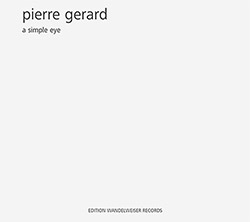
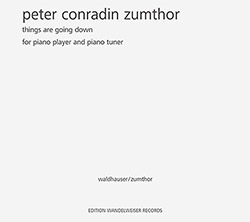


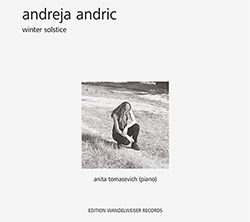
















![Barker / Parker / Irabagon: Bakunawa [VINYL]](https://www.teuthida.com/productImages/misc4/35533.jpg)
![Blaser, Samuel / Marc Ducret / Peter Bruun: Dark Was The Night, Cold Was The Ground [VINYL 10-inch]](https://www.teuthida.com/productImages/misc4/35492.jpg)










![Warren, Kenny (Warren / Hoffman / Ellman): Sweet World [VINYL]](https://www.teuthida.com/productImages/misc4/35451.jpg)


![Blake, Ran / Dave Knife Fabris: Live Amsterdam 2006, First Visit [CD + POSTCARDS]](https://www.teuthida.com/productImages/misc4/35275.jpg)
![Sanna, Claudio: Compositori Sardi Contemporanei II [2 CDs]](https://www.teuthida.com/productImages/misc4/35317.jpg)












![Nevai, Nandor: <<The PRICE of FRONTIER>> Book 1: FULK [BOOK + 4 CDs]](https://www.teuthida.com/productImages/misc4/35464.jpg)
![Nevai, Nandor: <<The PRICE of FRONTIER>> Book 2: MARTIAL [BOOK + 4 CDs]](https://www.teuthida.com/productImages/misc4/35465.jpg)
![Nevai, Nandor: <<The PRICE of FRONTIER>> Book 3: JASSOM [BOOK + 4 CDs]](https://www.teuthida.com/productImages/misc4/35466.jpg)
![Nevai, Nandor: <<The PRICE of FRONTIER>> Book 4: HARD-WON [BOOK + 4 CDs]](https://www.teuthida.com/productImages/misc4/35467.jpg)

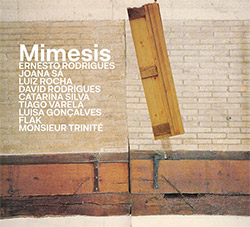




![DNS: Taking Big Bites Of The Khandas Three Cafes Deep [2 CDs]](https://www.teuthida.com/productImages/misc4/35334.jpg)




![Cleaver, Gerald: The Process [VINYL]](https://www.teuthida.com/productImages/misc4/34966.jpg)




![Alva Noto: HYbr:ID II [VINYL 2 LPs]](https://www.teuthida.com/productImages/misc4/35201.jpg)

![Baron, Derek / Luke Martin: Distinct and Concealed [CASSETTE + DOWNLOAD]](https://www.teuthida.com/productImages/misc4/35079.jpg)

![Lyle, Erica Dawn : Colonial Motels [CASSETTE + DOWNLOAD]](https://www.teuthida.com/productImages/misc4/35080.jpg)







![Alva Noto: HYbr:ID III [VINYL 2 LPs]](https://www.teuthida.com/productImages/misc4/35011.jpg)
![Kubisch, Christina / Trondheim Voices: Stromsanger 2022 For Six Voices And Electromagnetic Waves [VINYL]](https://www.teuthida.com/productImages/misc4/34628.jpg)








![Zurria, Manuel: Fame di Vento [3 CDs]](https://www.teuthida.com/productImages/misc4/35167.jpg)

![Granberg, Magnus / Nattens Inbrott / Skogen: Holde Traume, Kehret Wieder! [2 CDs]](https://www.teuthida.com/productImages/misc4/35038.jpg)
![Frey, Jurg: Outermost Melodie [2 CDs]](https://www.teuthida.com/productImages/misc4/35039.jpg)

![Pavone, Jessica: Reverse Bloom [VINYL]](https://www.teuthida.com/productImages/misc4/34895.jpg)




![Modney (Modney / Wooley / Gentile / Roberts / Pluta / Symthe / ...): Ascending Primes [2 CDs]](https://www.teuthida.com/productImages/misc4/34852.jpg)








![Elephant9 with Terje Rypdal: Catching Fire [VINYL 2 LPs]](https://www.teuthida.com/productImages/misc4/35355.jpg)
![Deerlady (Obomsawin, Mali / Magdalena Abrego): Greatest Hits [VINYL]](https://www.teuthida.com/productImages/misc4/34876.jpg)




![Haino, Keiji: Black Blues [2 CDs]](https://www.teuthida.com/productImages/misc4/35109.jpg)



![Surplus 1980: Illusion of Consistency [CD]](https://www.teuthida.com/productImages/misc4/35069.jpg)
![Staiano, Moe: Away Towards the Light [VINYL + DOWNLOAD]](https://www.teuthida.com/productImages/misc4/35037.jpg)
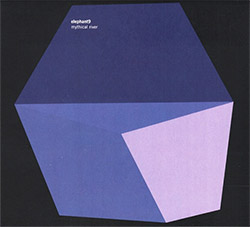



![Caveira (Gomes / Sousa / Abras / Ferrandini): Ficar Vivo [VINYL]](https://www.teuthida.com/productImages/misc4/34643.jpg)
![Gregg, J. J. / David Van Auken: Lunar Prairie [CD w/ DOWNLOAD]](https://www.teuthida.com/productImages/misc4/34611.jpg)

![Coultrain: Mundus [VINYL]](https://www.teuthida.com/productImages/misc4/32439.jpg)
![Mattin: Songbook #6 [VINYL]](https://www.teuthida.com/productImages/misc4/27317.jpg)
![Punkappella: Wake Up [7-inch VINYL]](https://www.teuthida.com/productImages/misc4/17519.jpg)
![Residents, The: WARNING: UNiNC.: Live And Experimental Recordings 1971-1972 [VINYL 2 LPs]](https://www.teuthida.com/productImages/misc4/31521.jpg)
![Coultrain: Phantasmagoria [VINYL]](https://www.teuthida.com/productImages/misc4/30142.jpg)
![Lennon, Sean Ono: Asterisms [VINYL]](https://www.teuthida.com/productImages/misc4/34517.jpg)

![Rotem Geffen: The Night Is The Night [VINYL]](https://www.teuthida.com/productImages/misc4/34631.jpg)
![Coley, Byron: Dating Tips for Touring Bands [VINYL]](https://www.teuthida.com/productImages/misc4/17906.jpg)

![Lost Kisses: My Life is Sad & Funny [DVD]](https://www.teuthida.com/productImages/misc4/lostKissesDVD.jpg)